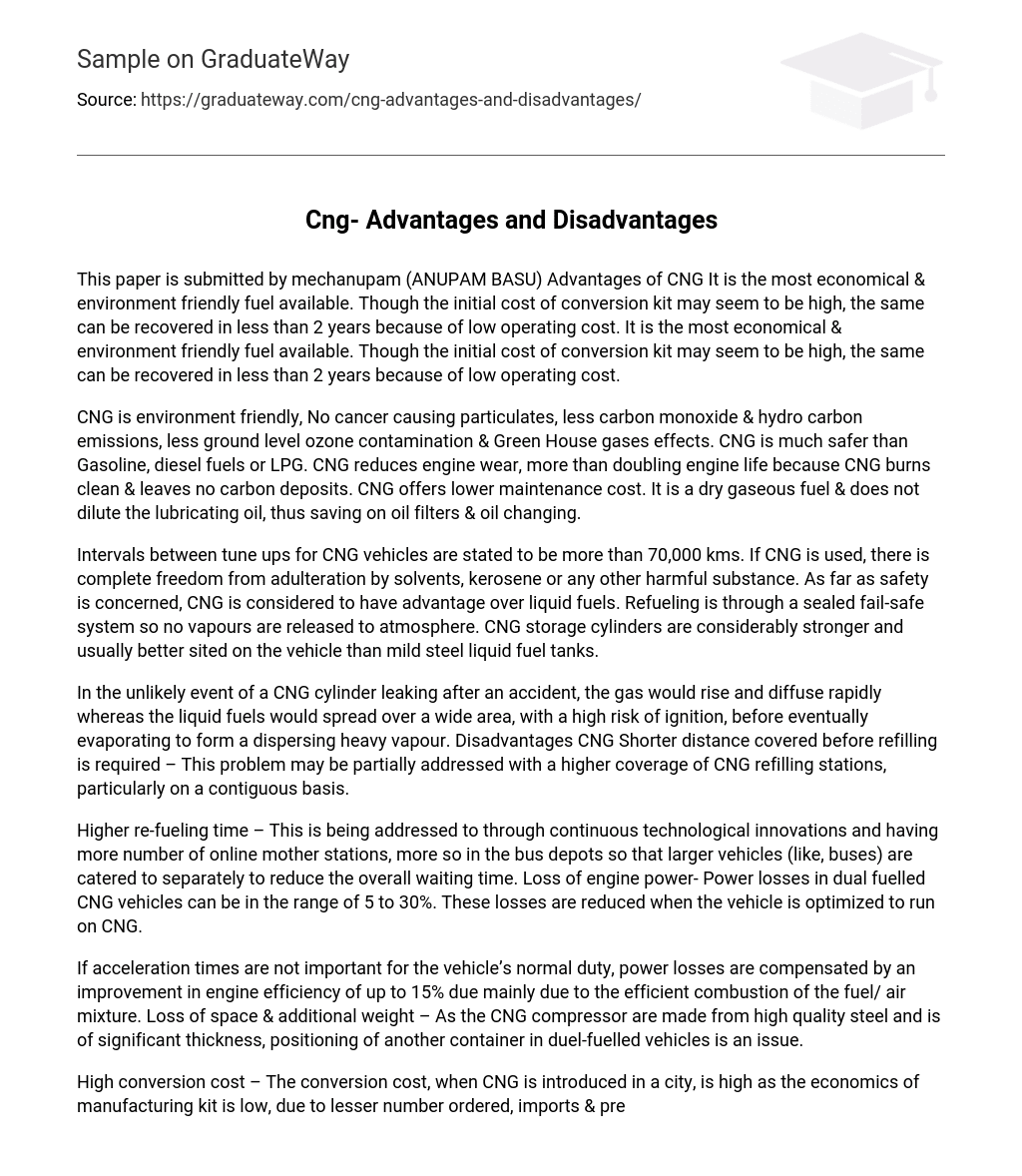This paper is submitted by mechanupam (ANUPAM BASU) Advantages of CNG It is the most economical & environment friendly fuel available. Though the initial cost of conversion kit may seem to be high, the same can be recovered in less than 2 years because of low operating cost. It is the most economical & environment friendly fuel available. Though the initial cost of conversion kit may seem to be high, the same can be recovered in less than 2 years because of low operating cost.
CNG is environment friendly, No cancer causing particulates, less carbon monoxide & hydro carbon emissions, less ground level ozone contamination & Green House gases effects. CNG is much safer than Gasoline, diesel fuels or LPG. CNG reduces engine wear, more than doubling engine life because CNG burns clean & leaves no carbon deposits. CNG offers lower maintenance cost. It is a dry gaseous fuel & does not dilute the lubricating oil, thus saving on oil filters & oil changing.
Intervals between tune ups for CNG vehicles are stated to be more than 70,000 kms. If CNG is used, there is complete freedom from adulteration by solvents, kerosene or any other harmful substance. As far as safety is concerned, CNG is considered to have advantage over liquid fuels. Refueling is through a sealed fail-safe system so no vapours are released to atmosphere. CNG storage cylinders are considerably stronger and usually better sited on the vehicle than mild steel liquid fuel tanks.
In the unlikely event of a CNG cylinder leaking after an accident, the gas would rise and diffuse rapidly whereas the liquid fuels would spread over a wide area, with a high risk of ignition, before eventually evaporating to form a dispersing heavy vapour. Disadvantages CNG Shorter distance covered before refilling is required – This problem may be partially addressed with a higher coverage of CNG refilling stations, particularly on a contiguous basis.
Higher re-fueling time – This is being addressed to through continuous technological innovations and having more number of online mother stations, more so in the bus depots so that larger vehicles (like, buses) are catered to separately to reduce the overall waiting time. Loss of engine power- Power losses in dual fuelled CNG vehicles can be in the range of 5 to 30%. These losses are reduced when the vehicle is optimized to run on CNG.
If acceleration times are not important for the vehicle’s normal duty, power losses are compensated by an improvement in engine efficiency of up to 15% due mainly due to the efficient combustion of the fuel/ air mixture. Loss of space & additional weight – As the CNG compressor are made from high quality steel and is of significant thickness, positioning of another container in duel-fuelled vehicles is an issue.
High conversion cost – The conversion cost, when CNG is introduced in a city, is high as the economics of manufacturing kit is low, due to lesser number ordered, imports & presence of less OEMs’. However, as the conversion number increases, the unit cost of conversion is bound to come down with vehicle manufacturers in a position to offer factor-fitted kits at significantly lower costs.





